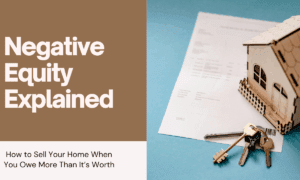Financial hiccups can happen to anyone. Whether it’s a missed payment, an unexpected expense, or a temporary loss of income, these challenges sometimes leave behind a more permanent mark on your credit file—like a County Court Judgment (CCJ) or default. But if you’re worried that such blemishes mean you can’t ever buy a home, take a deep breath. The truth is: yes, you can get a mortgage even with a CCJ or default—and this guide will show you how.
Understanding CCJs and Defaults
Before diving into mortgage eligibility, it’s important to clarify what these two terms mean:
- CCJ (County Court Judgment): A CCJ is a court order registered against you for failing to repay a debt. It stays on your credit report for six years unless paid in full within 30 days.
- Default: This typically means you’ve missed payments for several months and your lender has closed your account, writing it off as bad debt. Like a CCJ, it remains on your credit file for six years.
Both negatively impact your credit score and raise red flags for many high-street lenders—but they aren’t always deal-breakers.
The Rise of Adverse Mortgages
This is where adverse mortgages come into play. Also known as bad credit mortgages or subprime mortgages, these are specifically designed for people with poor credit histories—including those with CCJs, defaults, IVAs, and even bankruptcies.
Adverse mortgage lenders focus less on your past mistakes and more on your current financial situation. If you’ve demonstrated recent stability—such as steady employment, responsible use of credit, and consistent savings—your chances of approval improve significantly.
Key Factors Lenders Will Consider
While it’s possible to get a mortgage with bad credit, success depends on several key variables:
1. Age and Size of the CCJ or Default
Older CCJs and defaults (especially those over two years old) carry less weight than recent ones. A single small CCJ from three years ago will look far better than multiple recent defaults.
2. Satisfaction Status
Has the CCJ or default been settled? If you’ve repaid the debt—even partially—it shows responsibility and may make you more attractive to lenders.
3. Deposit Size
The more you can put down as a deposit, the less risk the lender takes on. While standard mortgage deals might require 5–10% deposits, adverse mortgage lenders often ask for 15–30%, especially if the credit issues are recent or severe.
4. Affordability
Lenders will assess your income, expenses, and overall financial stability. A good income-to-debt ratio and a proven ability to manage your money go a long way in convincing lenders you’re a worthy candidate.
5. Credit Score Improvements
If you’ve taken steps to improve your credit—like registering on the electoral roll, paying down debt, or using credit cards responsibly—this can significantly strengthen your case.
Steps to Getting a Mortgage with a CCJ or Default
Here’s a roadmap for turning that “no” into a “yes”:
Step 1: Review Your Credit File
Start by obtaining a copy of your credit report from agencies like Experian, Equifax, or TransUnion. Look for:
- The date and size of the CCJ or default
- Whether it’s been marked as “satisfied”
- Any other red flags you may have overlooked
Step 2: Save for a Bigger Deposit
A larger deposit shows commitment and reduces the lender’s risk. If possible, aim for at least 15%—more if your credit issues are recent.
Step 3: Speak to a Specialist Mortgage Broker
Not all lenders offer adverse mortgages directly to consumers. Specialist brokers have access to a network of lenders who cater to applicants with imperfect credit. They’ll assess your situation and match you with the best deal.
Step 4: Gather Strong Supporting Documentation
This might include:
- Recent payslips or self-employment accounts
- Proof of savings and deposit
- Evidence of rental payments (especially if you’ve been renting long-term without issues)
- A written explanation for the credit issues
Step 5: Be Honest in Your Application
Trying to hide or sugar-coat your credit history is a major red flag. Being upfront builds trust and allows your broker to find the right fit for your circumstances.
What Kind of Mortgage Deals Can You Expect?
While you might not qualify for the lowest advertised rates, the interest rates on adverse mortgages are not always sky-high either. If your issues are minor or historic, the rate might only be slightly above market average. As your credit profile improves, you can usually remortgage onto a better deal after a few years.
Tip: Ask your broker about “stepping stone” mortgages—shorter-term products that let you rebuild your credit with the goal of refinancing to a mainstream deal later on.
Can You Rebuild While You Borrow?
Absolutely. Many borrowers with previous CCJs or defaults use their mortgage period to:
- Build a positive credit history by keeping up with payments
- Reduce outstanding debts
- Improve credit scores over time
This not only secures your current home but also opens doors for better rates and products in the future.
Final Thoughts: Don’t Let Your Credit History Define Your Future
Having a CCJ or default on your record can feel like a massive hurdle—but it doesn’t make homeownership a fantasy. The growing availability of adverse mortgages means that more people with imperfect credit are finding routes onto the property ladder.
By taking the right steps—understanding your situation, saving a strong deposit, working with an experienced broker, and being transparent—you can absolutely secure a mortgage and start building a brighter financial future.



































